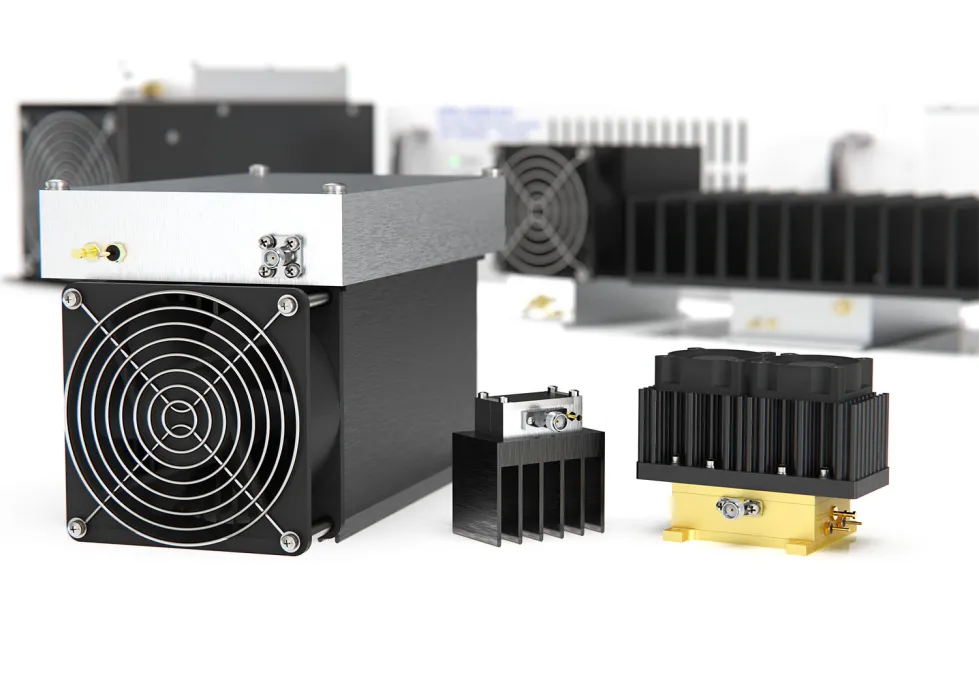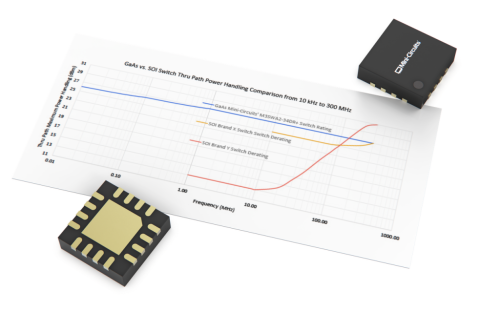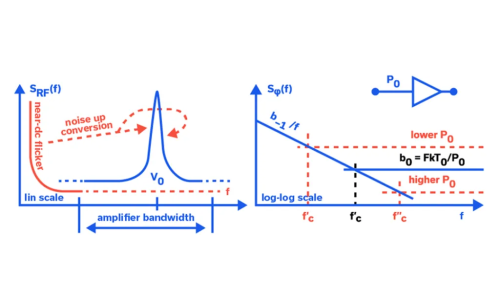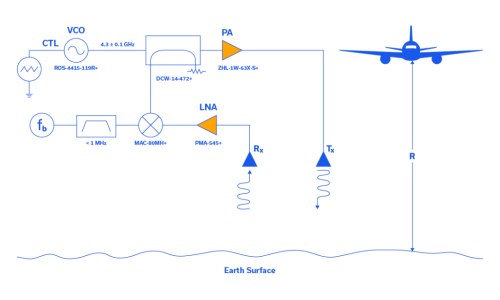Navigating Amplifier Thermal Analysis

Mini-Circuits has a longstanding legacy of fully specifying the thermal performance of our amplifiers, with or without a Mini-Circuits-supplied heatsink. Recently, it has become so commonplace for custom heatsinks to be utilized with Mini-Circuits power amplifiers that the power amplifier thermal characteristics are now expressed differently. Although the thermal resistance of the Mini-Circuits-supplied heatsink is no longer explicitly provided for newer models this is easily calculated from the specifications given for any model power amplifier. Basic calculations are all that is needed to arrive at any parameter of interest when analyzing thermal characteristics of any Mini-Circuits power amplifier.
Temperature Rise Given Rth
An analysis of a 100W GaN amplifier from Mini-Circuits (the ZHL-100W-GAN+) is shown below. Highlighted in yellow are the specifications cited on the data sheet for this amplifier product.

The specifications for this amplifier are so comprehensive that little is left to be calculated. Dissipated power (Pdiss), for instance, is simply the product of the operating voltage and current (30V x 9A), and is calculated as 270W for class A operation. The temperature rise (Trise) from ambient temperature to the baseplate temperature is often determined by multiplying the maximum dissipated power, Pdiss (W), by the thermal resistance of the heatsink, Rth (⁰C/W):
ZHL-100W-GAN+ ➜ Trise (⁰C) = Pdiss (W) x Rth (⁰C/W) = 270W x 0.074 (⁰C/W) = 20⁰C
Notice how the units of Watts cancel out to yield ⁰C in the result for Trise. Based upon the amplifier information given, the temperature rise from ambient to baseplate can also be determined by simply subtracting the ambient temperature (Tambient) from the maximum baseplate temperature (Tmax(baseplate)) or:
ZHL-100W-GAN+ ➜ Trise (⁰C) = Tmax(baseplate) (⁰C) – Tambient (⁰C) = 85⁰C – 65⁰C = 20⁰C
No Heatsink Thermal Resistance? No Problem!
What if the thermal resistance of the heatsink is not given? How is the required thermal resistance determined? The specifications given on the data sheet for a wideband Mini-Circuits amplifier (ZVA-213A-S+) are provided below and highlighted in yellow. The thermal resistance is not highlighted in yellow, since it is not explicitly called out on the data sheet:

First calculate the maximum dissipated power (Pdiss) as Voltage x Current, in this instance 12V x 0.55A, or 6.6W. Since Mini-Circuits has provided both the maximum baseplate temperature, Tmax(baseplate), and the maximum ambient temperature (Tambient), calculate the allowable temperature rise as before by subtracting Tambient from Tmax(baseplate):
ZVA-213A-S+ ➜ Trise (⁰C) = Tmax(baseplate) (⁰C) – Tambient (⁰C) = 75⁰C – 50⁰C = 25⁰C
The required heatsink thermal resistance can then be calculated from Pdiss (W) and Trise (⁰C) as:
ZVA-213A-S+ ➜ Rth (⁰C/W) = Trise (⁰C)/Pdiss (W) = 25⁰C/6.6W = 3.788⁰C/W
When determining heatsink thermal resistance, follow the units to ensure that the resulting parameter is expressed in ⁰C/W.
Custom Heatsink Design
It is sometimes necessary to calculate Trise when designing a custom (non-Mini-Circuits) heatsink for which the thermal resistance is well known. For the ZVA-213A-S+ of the previous example, assume a custom heatsink provides a thermal resistance of 5⁰C/W, which is highlighted in the table below in yellow:

Trise can be determined by multiplying the power dissipation in Watts by the thermal resistance (Rth) of the custom heatsink in ⁰C/W:
Trise (⁰C) = Pdiss (W) x Rth (⁰C/W) = 6.6W x 5.0⁰C/W = 33⁰C
Trise is higher than with the Mini-Circuits heatsink, consequently, at a fixed maximum baseplate temperature, the maximum ambient temperature must be reduced and is defined as:
Tambient (⁰C) = Tmax(baseplate) (⁰C) – Trise (⁰C) = 75⁰C – 33⁰C = 42⁰C
The simple calculations presented here should enable the user to easily navigate amplifier thermal analysis for any model in Mini-Circuits’ portfolio.












